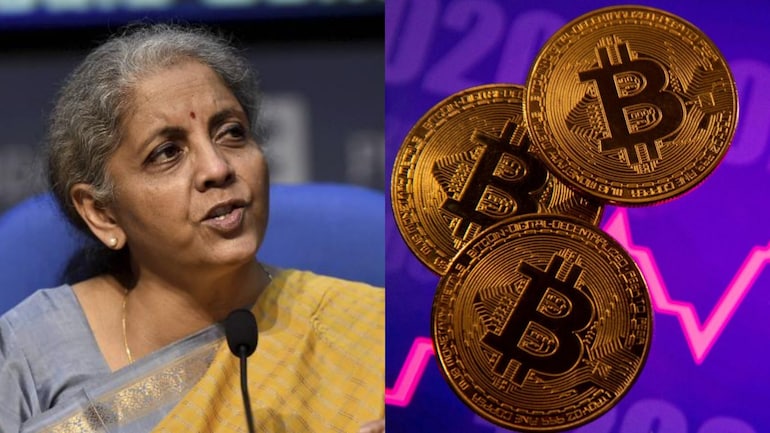Architecting a Regulatory Framework for Cryptocurrencies in India
The government as well as the RBI have recently again expressed their intention to ban cryptocurrencies. Instead of adopting such a counterproductive approach, the government must deftly weave together an optimal incentive structure for all stakeholders and develop institutional capacity to ensure citizens’ interests in the crypto market are maintained.
The Rise of Cryptocurrencies
The right to issue a “Legal Tender” has been a sovereign state’s responsibility for centuries. However, cryptocurrencies’ decentralized and anonymous nature threatens this very exclusive domain of the State. A nuanced and calibrated response from the State to navigate this complex concern would work better than outrightly banning cryptocurrencies, which might be a red flag for domestic and global investors. With global investors bullish on the Indian market, the government needs to leverage India’s technological advantages to propel her to become a thriving hub for blockchain-based entrepreneurial wonders.
The Proper Policy of the Government
The government’s approach should be to give a gentle touch and intervene only in case of violations of consumer rights. The government banning or limiting cryptocurrencies will have unintended consequences of driving their use underground or into the Dark Web. Going underground will take them out of the view of regulators like RBI/SEBI, with consumers having no recourse to grievance redressal. The government must also consider the ramifications of expanding regulators’ tread or bringing in a newer, more efficient watchdog.
The government must clear its policy stance on Virtual Digital Assets (VDA) by tabling the Cryptocurrency Bill before the Parliament. It should give existing/new regulators powers to take punitive measures in cases of fraud. Legal certainty is also needed in the treatment of cryptocurrency – Are they an asset class or medium of exchange? Consulting the public and engaging with stakeholders closer to the system to answer such policy questions would be the right step forward.
A dilly-dallying government approach can make investors hesitant to invest the capital necessary for growth. Policy indecision affects the valuation of tokens and leads to speculation that unfairly gives cryptocurrency a bad rap. Startups wishing to harness crypto’s efficient and decentralized nature will also prefer countries with clear pro-crypto policies.
Avoiding Governmental Overreach in Regulation
According to Public Choice Theory, government officials want to protect their power, discretion, and turf. Many financial mandarins in North Block, New Delhi, don’t have the proper incentive structure or technical know-how to comprehend the Crypto revolution. Their instinctual reaction would be to shun transactions via “sin-tax”. Lateral Entry Schemes attracting Industry technocrats and entrepreneurs can help resolve the information asymmetry and the hesitance in people’s minds. Capital will only flow if the government creates a favourable environment for crypto. Doing so will see startups rise to provide employment opportunities and economic growth.
A Market for Cryptocurrency
India has been the flagbearer of the most advanced payment ecosystems like UPI with quick settlement time, which even the most advanced western economies don’t have. All crypto exchanges can leverage India Stack for instant KYC verification. The JAM (Jan Dhan-Aadhar-Mobile) trinity can be used by users to link bank accounts for buying crypto in exchanges. Adopting cryptocurrencies should be a natural extension to India Tech Stack for cross-border payments and higher volume transactions. As INR is not a fully convertible currency, cryptocurrency would be better for higher-value transactions crossing the threshold of the Liberalized Remittance Scheme (LRS) limits.
With RBI expected to launch its own Central Bank Digital Currency (CBDC) tokens with sovereign backing, a prudent regulation would be to let both national and private cryptocurrencies compete and let individuals decide. The idea is to have the currencies compete and let the best one survive.
What is the Ideal Tax Policy?
Finance Minister Nirmala Sitharaman introduced a 30% tax on VDAs and 1% Tax Deducted at Source (TDS) at exchanges during her Budget speech of 2022-23. The MoF further clarified that crypto miners cannot offset their losses, nor can they claim input deductions on their hardware costs as per the policy. On its face, this policy seems to disincentivize investments in crypto and allied asset classes.

Hon’ble Prime Minister Narendra Modi has been vocal about mainstreaming Indic Knowledge Systems (IKS). He should take a leaf out of what Acharya Chanakya said: “A tax collector should collect taxes from a taxpayer just like a bee collects honey from a flower in an expert manner without disturbing its petals“. Drawing from the same wisdom, the government should lower tax rates to remove transaction costs and impediments preventing wide-scale adoption. A lower TDS rate would also bring more people into the tax ecosystem as the number of cryptocurrency investors in India exceeds the number of people who file income tax returns.
Employment and Skilling Opportunities in adopting Cryptocurrency
Architecting a thriving ecosystem using Blockchain technology requires a talent pool of software developers. An educational policy focusing on professional engineering courses emphasising Blockchain can help maintain a supply of skilled Blockchain architects. Even reskilling existing IT professionals will aid in keeping up with the demand. Consequently, a more educated workforce will also make for prudent and enterprising consumers of cryptocurrency.
Apart from services, cryptocurrency offers room for growth of the in-house manufacturing capability of specialized crypto-processors based on open-source RISC-V architecture of ASIC, FPGA and GPU critical for computationally expensive tasks. The mining of cryptocurrencies is a hardware-intensive process that entrepreneurs can harness to set up new industries and chip-design standards. A favourable environment for cryptocurrencies will also prompt hardware manufacturers who can design safe and secure ecosystems for the cryptocurrency regime to thrive to thwart hardware vulnerabilities. Adopting the above policy recommendations would aid the government in seamlessly integrating cryptocurrency with traditional financial systems making them resilient and adaptable. A pragmatic approach coupled with good legislative practices would yield better outcomes for both individuals and governments.
About the Author:

Arpit Awasthi is a Writing Fellow with the Fellowship for Freedom in India. He has completed his Master’s in Digital Systems Design from Osmania University College of Engineering, Hyderabad.



Leave a Reply